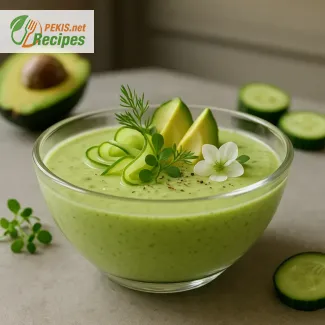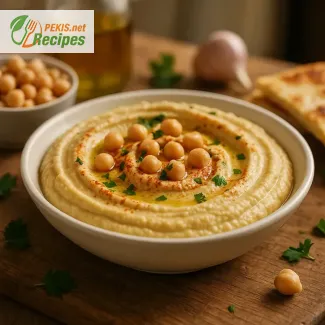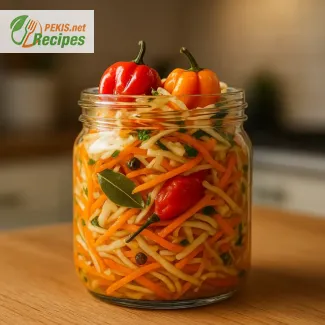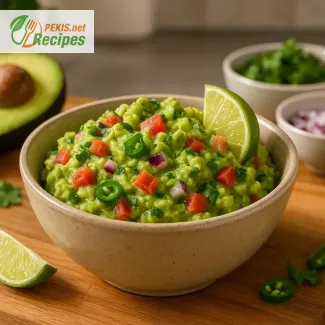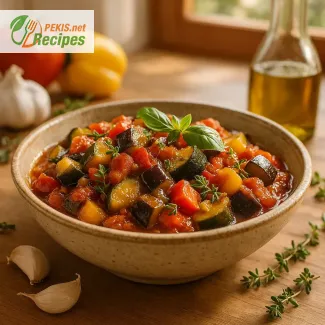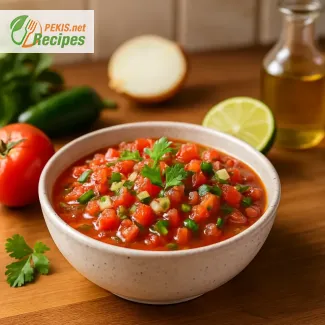
Discover the Secret Behind Real Mexican Flavor
The story and tradition of homemade salsa in authentic Mexican cuisine
Few sauces in the world hold such cultural weight and culinary importance as Mexican salsa. Far more than just a spicy dip, it’s a staple of traditional Mexican cooking, often passed down through generations and deeply embedded in daily meals. From the bustling street food stalls of Mexico City to family kitchens across Jalisco, salsa is a celebration of fresh, bold ingredients — a fusion of ripe tomatoes, fiery chilies, aromatic garlic, and vibrant cilantro, all brought to life with just the right touch of lime and salt.
In the heart of authentic Mexican cuisine, salsa isn't just a side — it's an essential component that ties dishes together. It’s spooned over tacos, folded into burritos, served with tortilla chips, or layered into grilled meats. The balance of acidity, heat, and freshness makes it one of the most dynamic condiments in global cooking.
What makes a salsa truly authentic?
An authentic Mexican salsa recipe doesn’t rely on shortcuts or store-bought sauces. It’s all about using real ingredients and preparing them in a way that respects their natural flavor. This means starting with ripe tomatoes, often charred or roasted to intensify sweetness and add depth. It includes chilies that match your heat preference — from the mild warmth of jalapeños to the smoky fire of chipotle or arbol chilies.
Unlike some commercial variations, traditional salsa recipes are usually prepared without artificial thickeners or preservatives, keeping the texture light, rustic, and full of character. Often blended coarsely rather than fully pureed, the best salsa lets each ingredient shine in both texture and taste.
Key ingredients that define Mexican salsa
The soul of any salsa lies in its core components. A proper homemade salsa incorporates:
- Tomatoes – preferably plum or Roma tomatoes, roasted for a deeper flavor
- Chilies – fresh or dried, depending on desired spice level and smokiness
- Onion and garlic – for aromatic foundation and complexity
- Cilantro – adds brightness and signature Mexican herbal note
- Lime juice – cuts through the richness and adds citrus zing
- Salt – enhances all flavors without overpowering
Each ingredient should be as fresh as possible, as freshness directly impacts the vibrancy and authenticity of the finished salsa.
Regional variations worth knowing
Across Mexico’s diverse culinary landscape, regional salsas vary greatly in spice, texture, and preparation methods:
- Salsa Roja (red salsa) is made with tomatoes and red chilies
- Salsa Verde (green salsa) swaps tomatoes for tomatillos, bringing tartness and freshness
- Pico de Gallo is a raw, chunky variation using chopped tomatoes, onions, cilantro, and lime
- Salsa Negra features dried chilies simmered in oil with garlic for an earthy, deep flavor
These variations show how salsa adapts to local tastes, available ingredients, and cultural traditions, proving its central role in Mexican culinary identity.
Why homemade salsa beats store-bought
While bottled versions can offer convenience, they often lack the depth, freshness, and complexity of a homemade salsa. Many contain excessive vinegar, sugar, or preservatives that mask the natural balance of ingredients. Making your own gives full control over the spice level, salt content, and consistency — whether you prefer it thick and smoky or light and zesty.
Crafting salsa at home also allows experimentation: want a fruitier twist? Add mango or pineapple. Prefer more heat? Increase the chili ratio. Love smokiness? Grill your ingredients before blending.
The experience of preparing salsa from scratch also connects you to centuries of culinary heritage, inviting you to bring the spirit of Mexico to your kitchen.
Perfect pairings for Mexican salsa
Salsa is incredibly versatile. Use it as a topping, dip, or even as a base for cooking. It pairs beautifully with:
- Grilled meats and seafood
- Tortilla chips or tostadas
- Tacos, enchiladas, and burritos
- Egg dishes like huevos rancheros
- Mexican rice and beans
Its bright, spicy character elevates even the simplest dishes, transforming them with layers of flavor that are unmistakably Mexican.
Freshness is everything
A key tip: always make salsa just before serving when possible. While it can be refrigerated for a day or two, its peak flavor comes within the first few hours. The lime juice and salt help preserve it naturally, but the aroma of freshly chopped cilantro or the warmth of just-roasted tomatoes is hard to beat.
Always taste before serving and adjust salt, lime, or chilies to get the perfect balance. With the right ingredients and attention to freshness, you’ll achieve the kind of salsa that defines authentic Mexican home cooking.
1. Prepare the vegetables.
Wash the tomatoes and chili peppers. Cut the tomatoes in half. Peel the onion and garlic. If using dried chilies, soak them in warm water for 15 minutes until softened.
2. Roast for flavor.
Place tomatoes, chili peppers, onion, and garlic on a baking tray. Drizzle with olive oil (optional). Roast in a preheated oven at 200°C (392°F) for about 10 minutes or until the skins are slightly charred and the tomatoes softened.
3. Blend the salsa.
Transfer the roasted ingredients to a blender or food processor. Add fresh cilantro, lime juice, and salt. Pulse a few times for a chunky texture or blend longer for a smoother salsa.
4. Adjust seasoning.
Taste and adjust with more salt or lime juice as needed. If the salsa is too thick, add a tablespoon of water to loosen it.
5. Cool and serve.
Let the salsa cool to room temperature. Serve with tortilla chips, tacos, grilled meats, or any favorite Mexican dish.
Elevating Homemade Salsa with Flavorful Upgrades
Expert techniques and creative ingredient twists for an unforgettable salsa
Crafting a truly memorable homemade Mexican salsa begins with mastering the basics, but the real magic lies in understanding how subtle adjustments can dramatically elevate the final result. From selecting superior produce to experimenting with unexpected additions, enhancing this beloved classic involves more than simply following a recipe. It’s about refining texture, sharpening balance, and amplifying freshness — all while maintaining the spirit of authentic Mexican flavor.
Choose better tomatoes and prep them right
Not all tomatoes are created equal when it comes to salsa. While the original recipe may call for Roma tomatoes, using vine-ripened heirloom or San Marzano varieties can enrich both sweetness and acidity. These tomatoes are meatier, less watery, and offer a deeper umami note, which creates a more concentrated base when roasted.
A common mistake is skipping the roasting step or undercooking the tomatoes. Properly roasting them until lightly charred enhances their natural sugars and creates depth of flavor. To take it even further, roast the tomatoes with the skin on and peel it afterward for a silkier texture.
Swap or blend chilies for a custom heat profile
One of the easiest ways to customize your salsa is by playing with the types and quantities of chili peppers. For those who enjoy mild spice, replacing red chilies with roasted poblano or Anaheim peppers can soften the heat and add a subtle smokiness. On the other hand, for a richer and deeper spiciness, incorporating dried chipotle, pasilla, or guajillo peppers into the blend introduces complexity, smokiness, and a beautiful dark hue.
Mixing two chili varieties — such as a mild fresh pepper and a smoky dried one — allows you to create a multi-layered heat without overpowering the palate. Always taste the chilies before blending; even the same variety can differ significantly in intensity.
Fresh herbs and acid balance make the difference
Cilantro is essential, but its quality and quantity make a noticeable difference. Use fresh cilantro leaves only, avoiding stems which can taste soapy or bitter. For a fresher, citrusy brightness, try combining lime and orange juice in the acid component. The orange adds subtle sweetness that balances out the spice and salt.
If you prefer a zestier note, a pinch of lime zest will boost the citrus aroma without adding more liquid. Conversely, if lime is unavailable, a splash of white vinegar or apple cider vinegar can help maintain acidity, though the flavor profile will shift slightly toward tanginess rather than citrus.
Boost umami and depth naturally
To bring a savory backbone to the salsa, try incorporating roasted garlic instead of raw. Roasting mellows its sharpness and infuses a caramelized complexity. A dash of ground cumin, smoked paprika, or even a spoonful of finely chopped sun-dried tomatoes can introduce earthy undertones and round out the flavor spectrum.
Another chef’s trick is to blend in a small amount of fire-roasted bell pepper, which adds body and sweetness while enhancing the smokiness without extra heat.
Avoiding common mistakes in salsa preparation
Many homemade salsas fall short due to a few avoidable pitfalls:
- Over-blending: Salsa should have texture. Over-processing results in a soup-like consistency that lacks body and visual appeal. Pulse gently to keep it rustic.
- Using underripe or flavorless tomatoes: Out-of-season tomatoes can make salsa taste flat. If fresh quality isn’t available, consider using high-quality canned fire-roasted tomatoes.
- Skipping salt balance: Salt is not just for taste — it amplifies other flavors. Undersalting makes the salsa dull, while oversalting masks natural ingredients.
- Not resting before serving: Allow the salsa to rest for at least 15 minutes after blending. This gives the flavors time to meld for a more harmonious bite.
Healthier and dietary-friendly improvements
Salsa is already a naturally low-calorie and nutrient-dense condiment, but there are still ways to make it even more health-focused:
- Reduce sodium: Use less salt or swap in low-sodium sea salt. Enhance flavor with herbs, lime juice, or mild vinegar instead.
- Increase fiber: Adding chopped red bell pepper or cucumber to the blend can boost fiber while adding crunch and freshness.
- Add antioxidants: Incorporating a few pomegranate seeds or chopped kale into a chunky version offers a nutritional punch and visual contrast.
- Make it oil-free: Omit olive oil from roasting and opt for dry-roasting or broiling. The flavors still intensify without the added fat.
Creative add-ins to match the occasion
Depending on the season or event, you can tweak the salsa to suit your taste and theme:
- Summer twist: Add diced mango, pineapple, or peach for a tropical flavor that complements grilled fish and shrimp.
- Winter warmth: Include a roasted dried ancho chili or a hint of cinnamon for a warming depth ideal with roasted meats.
- Festive flavor: Stir in chopped green onion, fresh corn kernels, or black beans for a chunkier, more filling version suitable for parties.
By understanding the interaction between ingredients and making informed, flavorful choices, your salsa can evolve from a simple condiment into the centerpiece of your dish — bursting with personality, freshness, and the unmistakable soul of Mexico.
Allergens present in the recipe:
- None of the main 14 allergens are present.
- Gluten-free: This recipe is naturally gluten-free.
Substitution tips to avoid allergens and gluten:
- Ensure no cross-contamination with gluten if using store-bought chips or serving alongside bread.
- For sensitive individuals, confirm that the chili source is free of additives or sulfites.
Vitamins and minerals per serving (approximate):
- Vitamin C: 21 mg – Supports immune health and skin repair.
- Vitamin A: 780 IU – Important for vision and cell growth.
- Potassium: 330 mg – Helps regulate fluid balance and muscle contractions.
- Folate (B9): 18 mcg – Supports healthy cell division.
- Iron: 0.5 mg – Essential for oxygen transport in the blood.
Antioxidants per serving (approximate):
- Lycopene: 5.5 mg – Found in tomatoes, protects cells from oxidative damage and supports heart health.
- Quercetin: 2.1 mg – Present in onions, contributes to anti-inflammatory and immune-modulating effects.
- Vitamin E: 0.3 mg – Found in olive oil, supports cell membrane protection.
